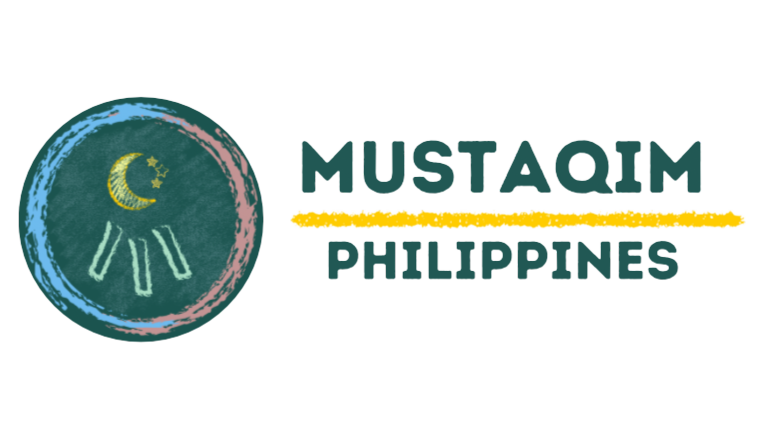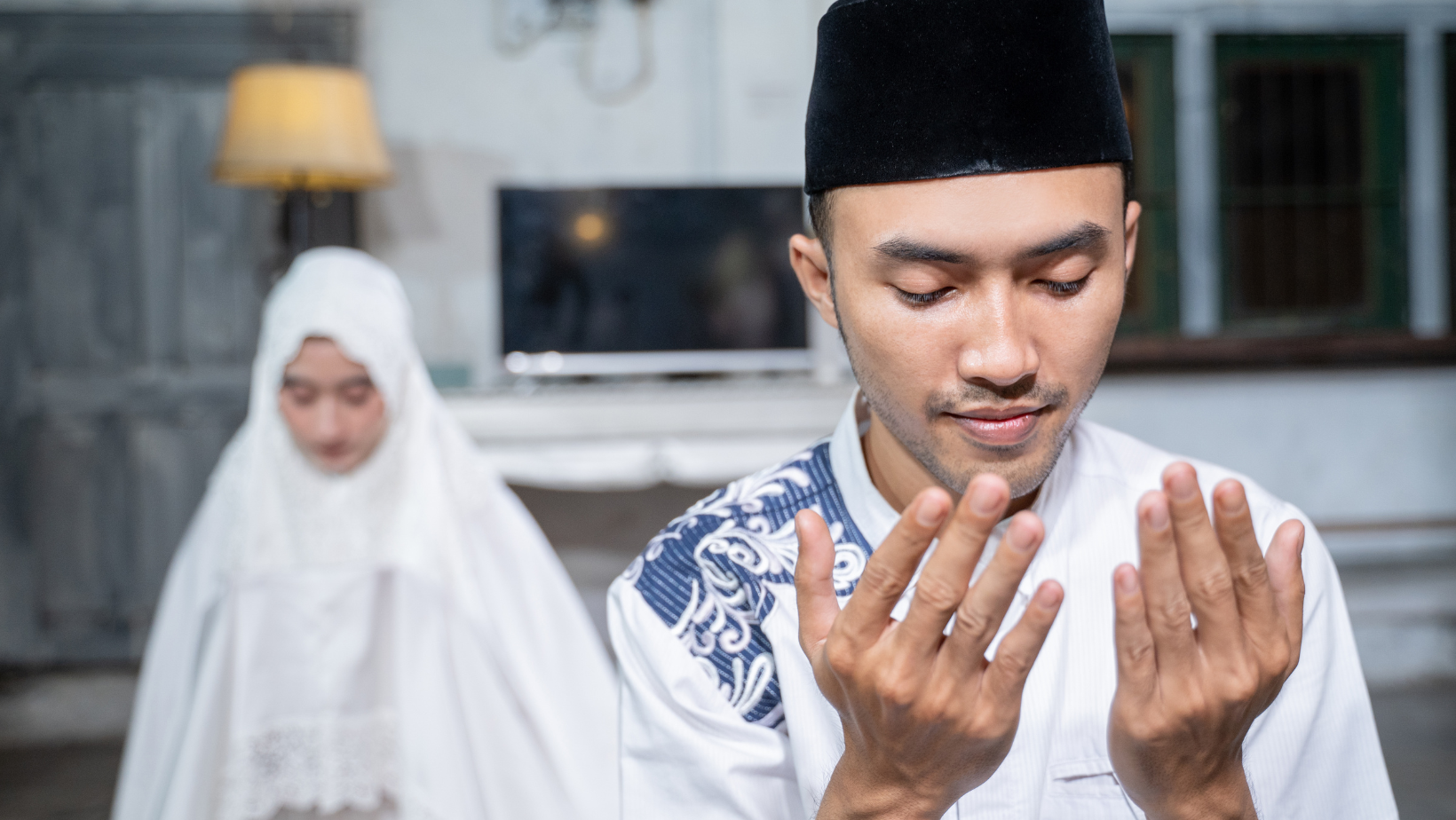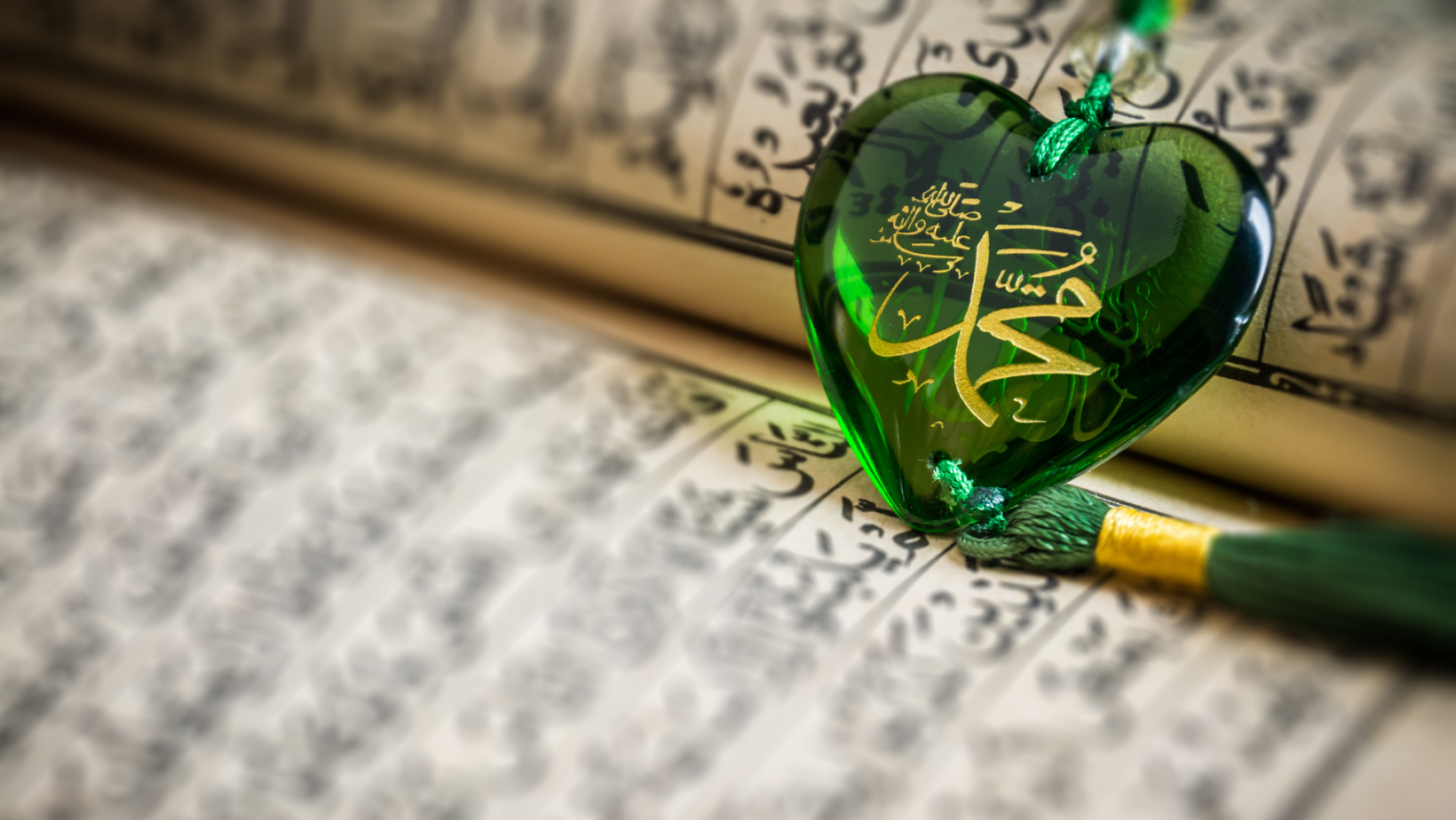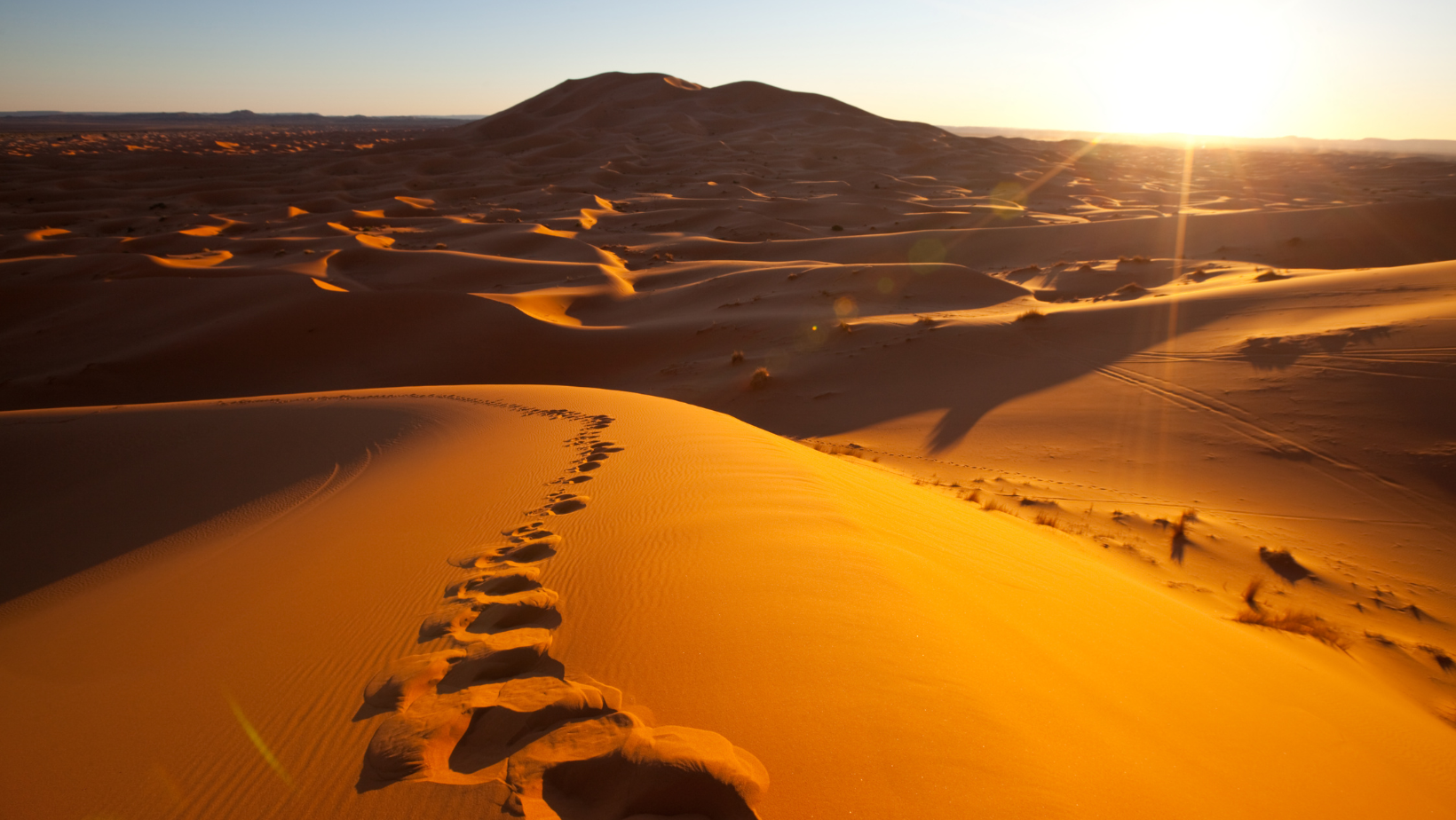Religious Practices Modeled by Prophet Muhammad: A Blueprint for Spiritual Living
Prophet Muhammad, the final messenger of Islam, is not only revered for his role in delivering the Quran but also for his exemplary religious practices. His life serves as a blueprint for Muslims seeking to deepen their spirituality and live a life in accordance with Islamic principles. Here are some of the religious practices modeled and exemplified by Prophet Muhammad:
- Prayer (Salah) - Prayer is one of the fundamental pillars of Islam, and Prophet Muhammad demonstrated its importance through his regular and devout practice. He performed five daily prayers with devotion, even during challenging circumstances. His punctuality and sincerity in prayer serve as an inspiration for Muslims worldwide.
- Fasting (Sawm) - The month of Ramadan is a time of fasting for Muslims, and Prophet Muhammad observed this fast diligently. His self-discipline during Ramadan, abstaining from food and drink from dawn till dusk, illustrates the significance of this spiritual practice.
- Charity (Zakat) - Prophet Muhammad was a model of generosity and compassion. He encouraged Muslims to give to those in need and set an example by giving to the poor and vulnerable. His actions underscore the importance of charity and helping those less fortunate.
- Pilgrimage (Hajj) - The pilgrimage to Mecca is a religious obligation for Muslims who are physically and financially able. Prophet Muhammad's Hajj pilgrimage serves as a guide for millions of Muslims who undertake this journey annually, emphasizing the significance of spiritual renewal and unity.
- Recitation and Memorization of the Quran - Prophet Muhammad was the recipient of the Quran, and he devoted himself to its study and memorization. His dedication to the Quran encourages Muslims to seek a deep understanding of its verses and strive to apply its teachings in their lives.
- Humility and Modesty - Prophet Muhammad was known for his humility and modesty. He wore simple clothing, lived a frugal life, and treated all people, regardless of their social status, with kindness and respect. His humility serves as a reminder to Muslims to prioritize inner character over outward appearances.
- Seeking Knowledge - Prophet Muhammad emphasized the importance of seeking knowledge throughout one's life. His teachings encourage Muslims to acquire both religious and worldly knowledge, emphasizing that knowledge is a source of enlightenment and empowerment.
- Interfaith Dialogue - Prophet Muhammad engaged in respectful dialogue with people of different faiths, demonstrating the importance of understanding and peaceful coexistence. His interactions with Christians, Jews, and others highlight the value of fostering interfaith understanding.
The religious practices modeled and exemplified by Prophet Muhammad provide Muslims with a comprehensive guide to leading a spiritually fulfilling life. His life serves as an embodiment of the values and principles outlined in Islam, encouraging Muslims to emulate his example of devotion, compassion, and service to humanity. By following these practices, Muslims strive to draw closer to God and live a life of purpose and righteousness, guided by the teachings of their beloved prophet.
Kabutihang-loob ni Propeta Muhammad: Inspirasyon para sa lahat
Kabutihang-loob - isa itong katangian na tila kaunti na lang ang mayroon ngunit napakahalaga sa ating buhay. At sa kasaysayan ng Islam, walang ibang tao ang mas mayaman sa kabutihang-loob kaysa kay Propeta Muhammad.
Sa pag-aaral ng buhay ni Propeta Muhammad, natutunan natin ang kahalagahan ng kabutihang-loob sa pakikipagtungo sa kapwa. Isa siyang halimbawa ng malasakit sa mga mahihirap, pag-aalaga sa mga may kailangan, at pagbibigay ng pagkakataon sa mga taong madalas na itinatwa ng lipunan.
Sa kanyang buhay, may mga pangyayaring nagpapakita ng kanyang kabutihang-loob. Isa na rito ang kanyang pagtanggap at pag-aalaga sa mga ulila at mga may kaawa-awang kalagayan. Hindi niya itinuring na iba ang tao base sa kanilang estado sa buhay. Ang lahat ay pantay-pantay sa kanyang mga mata.
Ang kabutihang-loob ni Propeta Muhammad ay hindi lamang isang pangyayaring nakalimutan pagkatapos ng kanyang kamatayan. Ito ay naging isang gabay para sa mga Muslim sa buong mundo. Ipinapaalala nito sa kanila ang halaga ng pagtulong sa mga nangangailangan, pagkakaroon ng malasakit sa kapwa, at pagpapakumbaba.
Hindi lang para sa mga Muslim ang mensaheng ito. Ang kabutihang-loob ni Propeta Muhammad ay isang huwaran para sa lahat ng tao, ano man ang kanilang pananampalataya o kultura. Ito ay isang paalala na maging mabuti tayo sa kapwa, sa pamamagitan ng simpleng pagtulong, pag-unawa, at pagkakaroon ng malasakit.
Bilang inspirasyon, si Propeta Muhammad ay patuloy na nagbibigay-liwanag sa ating landas patungo sa kabutihang-loob. Hindi lamang siya isang propeta sa Islam, kundi isang halimbawa na dapat nating tularan.
Kilalanin natin si Propeta Muhammad
Ang buhay ni Propeta Muhammad ay puno ng mga aral, halimbawa ng kabutihan, at pagmamahal sa Diyos at sa kapwa. Ipinanganak noong 570 CE sa Mekka, Saudi Arabia, siya ay bahagi ng tribo ng Quraysh. Ngunit higit sa kanyang pagiging isang mangangalakal, isang pangunahing yugto ang kanyang pagiging propeta.
Noong siya ay 40 taong gulang, natanggap ni Propeta Muhammad ang unang pagpapahayag mula kay Diyos sa pamamagitan ng anghel na si Gabriel. Ito ang naging simula ng kanyang misyon bilang propeta ng Islam. Sa mga susunod na taon, ipinahayag niya ang mga turo ng Islam, na isinasaad sa banal na Qur'an.
Sa kabila ng mga pagsubok at pag-oposisyon, nanatili si Propeta Muhammad na matiyagang tagasunod ng kanyang mga turo. Ipinamalas niya ang kabutihan, kababaang-loob, at pag-aalaga sa mga mahihirap at nangangailangan. Siya ay isang modelo ng integridad at katarungan.
Namayapa si Propeta Muhammad noong 632 CE, ngunit ang kanyang mga aral at halimbawa ay buhay pa rin sa puso at isipan ng mga Muslim sa buong mundo. Ipinapaalala niya sa atin ang halaga ng pagiging mabuti sa kapwa, pagsusumikap sa kabutihan, at pagsasakripisyo para sa Diyos.
Sa kasalukuyan, ang buhay ni Propeta Muhammad ay patuloy na nagbibigay inspirasyon sa milyun-milyong tao. Ipinapaalala nito na ang pagmamahal sa Diyos at pag-aalaga sa kapwa ay mga halaga na dapat nating itaguyod at isabuhay sa ating araw-araw na buhay. Ang buhay ni Propeta Muhammad ay isang huwaran ng pagiging mabuting tao at tunay na alagad ng Diyos.
Prophet Muhammad's Compassion Towards Non-Muslims: A Lesson in Tolerance and Humanity
Throughout history, there have been leaders who have shaped nations and cultures, but few have left a legacy of compassion and tolerance as profound as Prophet Muhammad, the founder of Islam. While he is celebrated as a prophet by Muslims worldwide, it's equally important to recognize how he treated non-Muslims during his lifetime. Prophet Muhammad's interactions with people of different faiths serve as an exemplary model of tolerance, respect, and humanity.
The Constitution of Medina:
One of the earliest demonstrations of Prophet Muhammad's inclusive approach was the Constitution of Medina, established in 622 CE when he migrated to Medina. This historical document governed the relationships between different religious communities living in the city, including Muslims, Jews, and Pagans. It granted religious freedom, equal protection under the law, and established a sense of community among diverse groups.
Protection of Religious Practices:
Prophet Muhammad not only respected the religious practices of non-Muslims but also ensured their protection. He permitted Christians to hold their religious ceremonies and allowed Jews to follow their laws within their communities. This demonstrated a profound respect for the beliefs of others and a commitment to coexistence.
Interfaith Dialogues:
Prophet Muhammad actively engaged in dialogues with people from different faiths, seeking common ground and understanding. His interactions with Christian and Jewish scholars and leaders fostered an environment of intellectual exchange, demonstrating the importance of dialogue in building bridges between communities.
Mercy and Forgiveness:
Prophet Muhammad's capacity for forgiveness was evident in his dealings with those who opposed him. After the conquest of Mecca, he showed immense clemency toward former adversaries. This act of mercy and forgiveness set a powerful example of how to respond to hostility with kindness.
The Treatment of Prisoners:
Even in the midst of conflicts, Prophet Muhammad emphasized the humane treatment of prisoners of war. He encouraged kindness and generosity toward captives, further highlighting his commitment to respecting the dignity of all individuals.
Economic and Social Justice:
Prophet Muhammad advocated for economic and social justice, irrespective of faith. He championed the rights of the poor and vulnerable, emphasizing the importance of charity and equitable distribution of wealth.
Prophet Muhammad's treatment of non-Muslims serves as a timeless lesson in tolerance and humanity. His actions and teachings underscore the values of compassion, respect, and coexistence. In a world marked by religious and cultural diversity, his example continues to inspire us to embrace differences, foster understanding, and build a more inclusive and harmonious society. Prophet Muhammad's legacy reminds us that the principles of tolerance and respect are not confined to any particular faith but are universal values that can guide our interactions with people of all backgrounds.
The Battles of Prophet Muhammad: Understanding Their Historical Context and Significance
The life of Prophet Muhammad, the founder of Islam, was marked by a series of battles that played a pivotal role in the spread of the new faith. While these battles are often discussed, it's essential to examine them within their historical context to gain a more nuanced understanding of their significance.
The Battle of Badr (624 CE):
The Battle of Badr is one of the most famous and consequential battles in Islamic history. It took place in the second year of the Hijra (Muhammad's migration from Mecca to Medina) and was a clash between the Muslims of Medina and the Quraysh tribe of Mecca. Despite being outnumbered, the Muslims achieved a remarkable victory, which is often seen as a divine confirmation of Muhammad's prophethood.
The Battle of Uhud (625 CE):
The Battle of Uhud followed the Battle of Badr and was a sobering experience for the Muslims. While initially successful, the Muslims faced setbacks due to a breach of their battle plan. This battle emphasized the importance of discipline and unity among the Muslim ranks.
The Battle of the Trench (627 CE):
The Battle of the Trench, also known as the Battle of Khandaq, was a unique defensive strategy employed by the Muslims when faced with a coalition of tribes aiming to attack Medina. The Muslims dug a trench to protect the city, and this tactic effectively thwarted the enemy's advances.
The Treaty of Hudaybiyyah (628 CE):
While not a battle in the traditional sense, the Treaty of Hudaybiyyah is a crucial event. It was a peace agreement between the Muslims and the Quraysh of Mecca, allowing for a temporary cessation of hostilities. This treaty laid the groundwork for the eventual peaceful conquest of Mecca.
The Conquest of Mecca (630 CE):
The peaceful takeover of Mecca was a significant turning point. After years of persecution and conflict, Prophet Muhammad and his followers entered Mecca without bloodshed. This conquest symbolized the triumph of Islam and the Prophet's commitment to mercy and reconciliation over vengeance.
The Battle of Hunayn (630 CE) and Tabuk (630 CE):
These battles took place after the Conquest of Mecca. The Battle of Hunayn was a challenge faced by the Muslim army in a mountainous region, emphasizing the importance of steadfastness. The Battle of Tabuk involved a long march to confront a potential threat, highlighting the dedication of the Muslim community.
It's crucial to note that these battles occurred in a specific historical and political context. They were not religious wars but were often defensive in nature, with the Muslims facing threats and opposition. Additionally, the battles served to consolidate the nascent Muslim community, develop military strategies, and spread the message of Islam.
In summary, the battles of Prophet Muhammad are integral to Islamic history, but they should be understood in their historical context. They highlight the challenges faced by the early Muslim community and the strategic, defensive nature of many engagements. The life of Prophet Muhammad encompasses not only battles but also a broader message of peace, tolerance, and unity.
Rameer Tawasil: Ang Muslim Artist na Taglay ang Pintig ng Sining at Kultura
Sa mundo ng sining, may mga artistang hindi lang gumagawa ng mga obra ngunit nagiging tagapagdala rin ng mensahe at pagbabago sa lipunan. Isa sa mga mapagbigay ng inspirasyon at pag-asa ay si Rameer Tawasil, isang Filipino muslim artist na kilala sa kanyang husay sa pagpipinta at paglalahad ng kanyang kultura at paniniwala sa pamamagitan ng sining.
Si Rameer Tawasil ay tubong Marawi City, isang lungsod na tinaguriang "Ground Zero" matapos ang digmaan noong 2017. Sa kabila ng mga pagsubok at panganib, hindi nagpatinag si Rameer na itaguyod ang kanyang pagmamahal sa sining at kultura. Ang kagitingan na ito ay nagsilbing inspirasyon sa marami, hindi lamang sa kanyang komunidad kundi pati na rin sa buong Pilipinas.
Bilang isang Muslim, isang bahagi ng kanyang pagmamahal at identidad ay nagiging bahagi rin ng kanyang mga likhang-sining. Ang mga obra ni Rameer ay nagpapakita ng mga matapat na saloobin at damdamin, pati na rin ang mga paglalakbay ng isang taong naniniwala sa pagmamahal at kapayapaan. Sa pamamagitan ng kanyang mga likha, nabubuksan ang mga puso at isipan ng mga manonood sa mga realidad at karanasan ng mga Muslim sa bansa.
Ang pagiging isang Muslim artist ay nagbibigay kay Rameer ng pagkakataon na ipakita sa ibang tao ang magaganda at kakaibang aspeto ng kanyang kultura. Ang kanyang mga obra ay naglalaman ng mga simbolo at kahulugan na nagpapakita ng kagandahan ng Islam at pagkakakilanlan bilang isang Muslim.
Sa isang lipunan na minsan ay may mga maling mga opinyon tungkol sa mga Muslim, ang sining ni Rameer ay nagsisilbing isang paraan upang baguhin ang mga maling paniniwala at palawakin ang pang-unawa sa kultura nila. Ipinapakita niya na ang sining ay isang daan tungo sa pag-asa at pagkakaunawaan, at maaari nitong mas lalong pag-isahin ang mga tao sa kabila ng pagkakaiba nila.
Mula nang maging aktibo sa sining, mas lalong tumibay ang paniniwala ni Rameer na ang sining ay isang malakas na kasangkapan upang ipahayag ang kanyang mga damdamin at pagmamahal sa kultura. Nakamit niya ang maraming parangal at pagkilala, na nagpapakita ng pag-apruba at pagpapahalaga ng industriya sa kanyang likhang-sining.
Ngunit higit pa sa pagkilala, ang pagsasalin ng kanyang sining sa pag-unlad at pagbangon ng kanyang lungsod ay isa sa mga pinakamahalagang tagumpay na inaabot ni Rameer. Ipinakita niyang ang sining ay maaaring maging instrumento para sa pagbubukas ng puso at isipan ng mga tao, lalo na sa mga panahon ng pagsubok at krisis.
Si Rameer Tawasil, ay pumanaw noong hunyo ngunit patuloy na naglalakbay at lumalaban ang kanyang sining upang maging boses para sa mga Muslim at sa lahat ng mga Pilipino. Ibinubukas niya ang kanyang puso at isipan sa mga pagbabago at pag-unlad sa lipunan, at patuloy na nagiging inspirasyon sa mga kabataan at iba pang artistang naniniwala sa kapangyarihan ng sining.
Ang kwento ni Rameer Tawasil ay isang halimbawa ng pagmamahal sa sining at kultura na nagbibigay-buhay at nagbibigay ng pag-asa sa mga tao. Sa kanyang mga likha at pag-unlad, patuloy niyang pinapaalab ang apoy ng inspirasyon sa bawat isa na magpakadalubhasa at maging boses ng pagbabago sa pamamagitan ng sining.
Embracing Hope and Optimism: The Hijri New Year
As Muslims around the world welcome the arrival of the Hijri New Year, it is a time for reflection, renewal, as the Muslims embrace hope and optimism. The transition to a new year in the Islamic calendar presents an opportunity for believers to look ahead with faith, resilience, and a positive outlook. It is a moment to draw inspiration from the past, celebrate accomplishments, and anticipate a future filled with blessings and possibilities.
Muslims celebrate the Hijri New Year with gratitude, acknowledging the blessings and guidance of Allah throughout the previous year. It is a time to reflect upon the mercy, wisdom, and providence of the Almighty, recognizing His continuous presence and care in their lives. This reflection fosters a sense of hope and optimism, as Muslims believe that Allah's divine plan encompasses all aspects of their existence, providing comfort and reassurance for the future.
The arrival of the Hijri New Year also prompts Muslims to revisit the life and teachings of the Prophet Muhammad (peace be upon him). His unwavering faith, perseverance, and resilience in the face of adversity serve as a source of inspiration and hope. Muslims reflect on his example, drawing strength from his character, values, and the transformative impact he had on society. This contemplation instills a sense of optimism, reminding believers that they too can overcome challenges and contribute positively to the world.
The Hijri New Year provides an opportunity for Muslims to recommit themselves to their faith and spiritual growth. It is a time to assess one's relationship with Allah, seek forgiveness for past shortcomings, and set goals for personal improvement. This process of renewal generates a renewed sense of hope, as Muslims strive to align their actions with their values and draw closer to their Creator. It is an invitation to embrace optimism and trust in Allah's guidance as they embark on a new chapter of their spiritual journey.
During the Hijri New Year, Muslims come together as a community, fostering a sense of unity, support, and collective hope. They engage in prayers, attend gatherings, and share meals, strengthening the bonds of brotherhood and sisterhood. This communal spirit cultivates optimism as believers draw strength from one another, encouraging and inspiring each other to navigate the challenges of life with hope and resilience.
As Muslims celebrate the arrival of the Hijri New Year, they embrace hope and optimism as integral components of their faith. Through reflection, drawing inspiration from the Prophet Muhammad, renewing their spiritual commitments, and nurturing community solidarity, believers find solace and encouragement. This celebration reminds Muslims that with trust in Allah's guidance, a positive outlook, and a steadfast commitment to their values, they can face the future with hope, optimism, and unwavering faith in the divine plan.
Ano nga ba ang Hijri New Year?
Ang Hijri New Year, na kilala rin bilang Islamic New Year, ay isang mahalagang pagdiriwang sa Islam na nagpapahayag ng paglipat sa panibagong taon sa Islamic lunar calendar. Ito ay base sa mga buwan at hindi nagtutugma sa Gregorian calendar na karaniwang ginagamit sa maraming bahagi ng mundo.
Ang Islamic lunar calendar ay binubuo ng 12 lunar months at may kabuuang 354 o 355 araw, depende sa panahon. Ang paglipat ng taon sa Hijri calendar ay batay sa pagganap ng buwan ng Muharram, na itinuturing na isa sa mga banal na buwan sa Islam.
Ang kasaysayan ng Hijri New Year ay nauugnay kay Propeta Muhammad, ang tagapagtatag ng Islam. Noong taong 622 CE, si Propeta Muhammad at ang kanyang mga tagasunod ay naglakbay mula sa Makkah patungong Medina sa isang pangyayaring kilala bilang Hijra. Ang Hijra ay tumutukoy sa migrasyon ng Propeta Muhammad at ang pagtatatag ng unang komunidad ng Muslim sa Madina.
Ang Hijra ay isang mahalagang pangyayari sa kasaysayan ng Islam at nagsisilbing simula ng isang bagong yugto sa pag-unlad ng relihiyon. Ang pagdiriwang ng Hijri New Year ay hindi katulad ng malalaking pagdiriwang sa Ramadan o Eid al-Fitr, ngunit ito ay mahalaga sa mga Muslim bilang panandaliang pagpapahinga at pagsalubong sa mga bagong simula. Ito ay isang pagkakataon para mag-isip at magbalik-tanaw sa mga pangyayari sa buhay ni Propeta Muhammad at sa kasaysayan ng Islam.
Sa buong Hijri New Year, ang mga Muslim ay nagpapahayag ng pasasalamat at pagpapahalaga sa mga aral ng kasaysayan ng Islam. Ito ay isang pagkakataon upang magpatibay ng kanilang pananampalataya at maghanap ng espirituwal na pagpapahinga at panibagong inspirasyon.
Sa pamamagitan ng pagdiriwang ng Hijri New Year, ang mga Muslim ay nagbibigay halaga sa kanilang relihiyon, kasaysayan, at mga prinsipyo. Ito ay isang pagkakataon upang magkaisa bilang isang komunidad at patuloy na lumago at umunlad sa ilalim ng mga gabay ng Islam.
Eid al-Adha: The Festival of Sacrifice in Islam
On June 28, the Philippine government declared Eid al-Adha as a national holiday, recognizing its significance for Muslims. But what exactly is Eid al-Adha and what does it entail for the Muslim community?
Eid al-Adha, also known as the Feast of Sacrifice or the Greater Eid, is one of the most significant religious festivals celebrated by Muslims worldwide. It commemorates the willingness of Prophet Ibrahim to sacrifice his son as an act of obedience to Allah. According to Islamic tradition, as Ibrahim prepared to carry out the sacrifice, Allah intervened and provided a ram as a substitute.
The story of Ibrahim's obedience and devotion holds immense importance in Islam. It symbolizes the concept of total submission to Allah's command, as well as the value of sacrifice in the path of righteousness. Eid al-Adha serves as a reminder to Muslims of the importance of faith, selflessness, and surrendering to Allah's will.
Eid al-Adha is observed on the 10th day of Dhu al-Hijjah, the twelfth month of the Islamic lunar calendar. The festival lasts for four days, during which Muslims engage in various religious and communal activities.
One of the central rituals of Eid al-Adha is the sacrifice of an animal, such as a sheep, goat, cow, or camel. This act represents Ibrahim's intended sacrifice and demonstrates Muslims' willingness to give up what is dear to them for the sake of Allah. The meat of the sacrificed animal is then distributed among three groups: one-third is shared with the needy and less fortunate, one-third is given to relatives and friends, and the remaining third is consumed by the individual and their family.
In addition to the sacrifice, Muslims observe special prayers called Eid prayers in congregational settings. These prayers are held in mosques or large open spaces and are led by an imam. It is a time for Muslims to come together as a community, strengthen their bonds, and express gratitude for Allah's blessings.
Eid al-Adha is also a time for Muslims to dress in their best attire and exchange warm greetings of "Eid Mubarak," which means "Blessed Eid." Families and friends gather to share meals and engage in joyful celebrations. It is a time of generosity, forgiveness, and spreading happiness among loved ones and the wider community.
The declaration of Eid al-Adha as a national holiday in the Philippines acknowledges the importance of this festival to the Muslim population in the country. It demonstrates inclusivity and respect for religious diversity, allowing Muslims to observe their religious traditions without hindrance.
As Muslims celebrate Eid al-Adha, they renew their faith, reflect on the teachings of Islam, and strengthen their relationship with Allah and fellow believers. The festival serves as a reminder of the values of sacrifice, devotion, and compassion that Muslims strive to embody in their daily lives. It is a time of unity, spiritual rejuvenation, and acts of kindness towards others.
Ang Kahalagahan ng Hajj sa Puso at Isipan ng mga Pilipinong Muslim
Ang Hajj ay isa sa pinakamahalagang pangyayari sa buhay ng mga Muslim. Ito ang isang banal na paglalakbay sa Makkah, Saudi Arabia na ginagawa ng milyun-milyong Muslim sa buong mundo tuwing taon. Bagama't ito ay isang pandaigdigang pagdiriwang, ang kahulugan at epekto nito sa mga Pilipinong Muslim ay hindi maitatanggi.
Para sa mga Muslim sa Pilipinas, ang Hajj ay isang sagradong tungkulin at isang malaking pagsasakripisyo. Ang mga Muslim na nakapag-Hajj ay inaasahang bumalik na may malalim na pag-unawa sa kanilang pananampalataya at may pagbabagong naganap sa kanilang puso at isipan.
Ang unang kahalagahan ng Hajj para sa mga Pilipinong Muslim ay ang pagkakaroon ng pagkakataon na sumamba sa Kaaba, ang pinakabanal na dambana ng Islam. Sa loob ng Masjid al-Haram, ang pakiramdam ng kapayapaan at pagsamba ay napapalakas. Ang pagtanggap sa seremonyal na pag-ikot (tawaf) sa paligid ng Kaaba ay nagbibigay ng espiritwal na pagpapakumbaba at pananampalataya.
Bukod sa pananampalataya, ang Hajj ay nagbibigay ng pagkakataon sa mga Muslim na magkakasama-sama mula sa iba't ibang lugar at kultura. Ang Hajj ay nagpapababa ng mga hadlang at nagbibigay-daan para sa mga Pilipinong Muslim na magkaroon ng ugnayan at pagkakaisa sa iba't ibang panig ng mundo. Ang pakikihalubilo sa iba't ibang kultura at pagbabahagi ng karanasan ay nagpapalawak ng kamalayan ng mga Pilipinong Muslim at nagpapatibay sa kanilang pagkakakilanlan bilang bahagi ng pandaigdigang ummah.
Ang paglahok sa Hajj ay nagbibigay rin ng pagkakataon sa mga Muslim na mag-isip at magnilay-nilay sa kanilang sarili at sa kanilang relasyon sa Allah. Sa pamamagitan ng mga ritwal at panalangin, nagiging malinaw ang kahalagahan ng pagiging masunurin sa mga utos ng Diyos at pagpapanatili ng espirituwal na kalakasan. Ang mga pagsisikap at pagsasakripisyo na kaakibat ng Hajj ay nagpapalakas sa pananampalataya at pagpapahalaga sa mga banal na aral ng Islam.
Ang Hajj ay isang malaking hamon at pagsasakripisyo para sa mga Muslim. Ngunit ang kahalagahan at epekto nito sa puso at isipan ng mga Pilipinong Muslim ay hindi matatawaran. Ito ay isang pagkakataon para sa pananampalataya, pagkakaisa, espiritwal na pagpapakumbaba, at paglalagay ng sarili sa harap ng Diyos. Ang mga Pilipinong Muslim na naglalayon na makapag-Hajj ay patuloy na hinahangad ang banal na paglalakbay na ito bilang isang tungkulin at sagradong pagsasakripisyo.
Sa pamamagitan ng Hajj, ang mga Pilipinong Muslim ay patuloy na pinatitibay ang kanilang pananampalataya, nagkakaroon ng pagkakaisa sa pandaigdigang komunidad ng mga Muslim, at nagpapalawak ng kanilang kaalaman at kamalayan. Ang bawat hakbang at panalangin sa Hajj ay naglalayo sa kanila mula sa mundanong mga pagsuway at nagbibigay-daan sa kanila na bumalik sa kanilang komunidad bilang mas mabuting mga Muslim.










